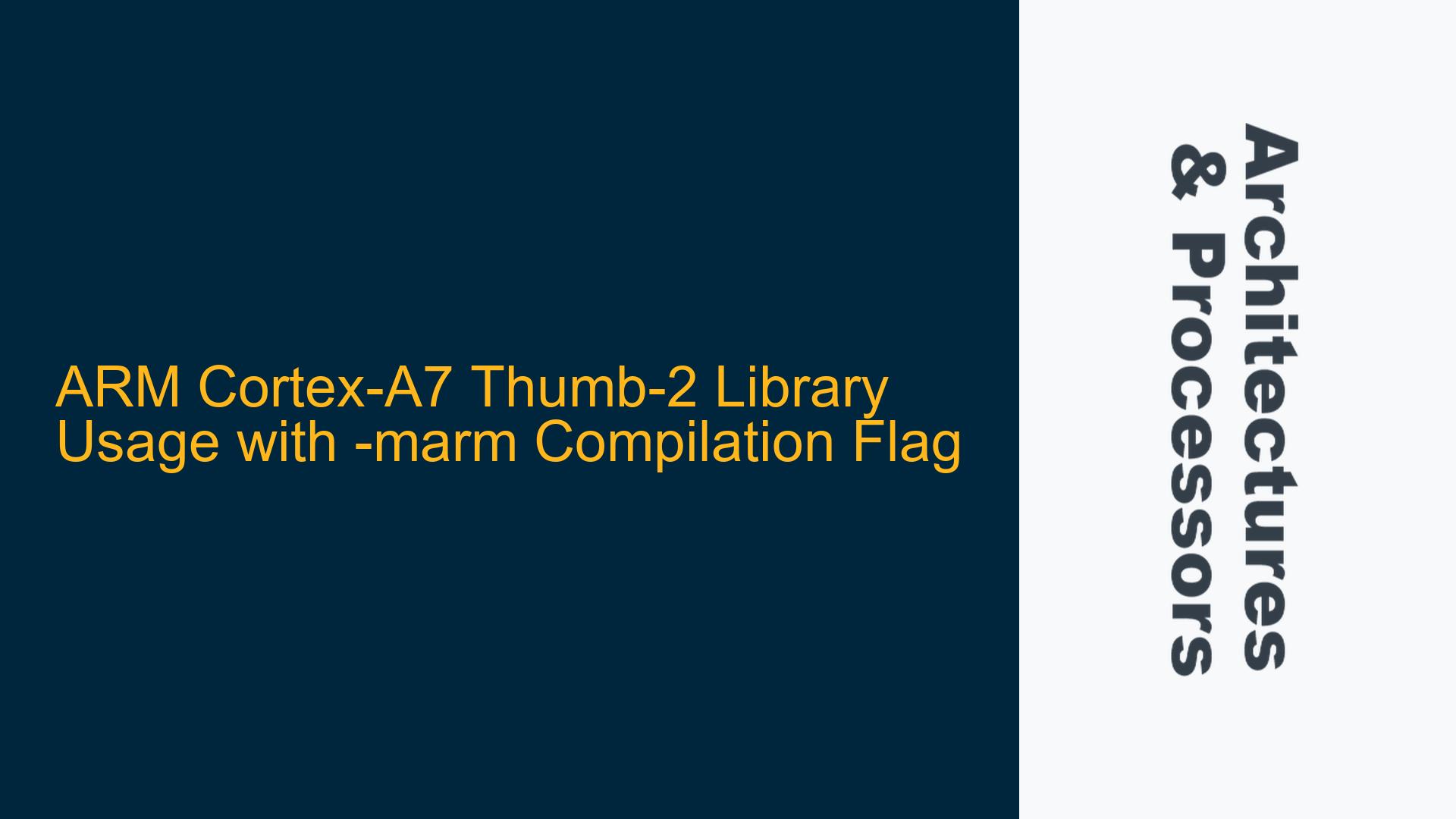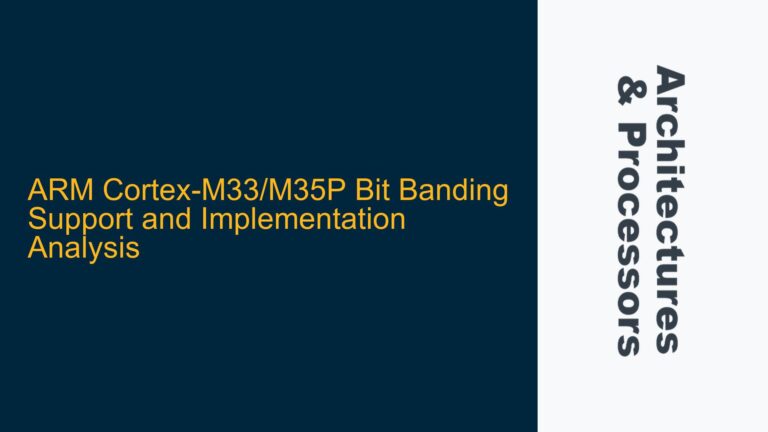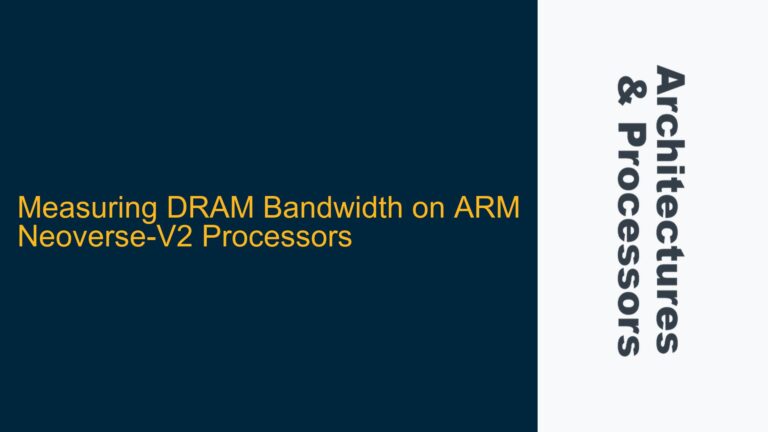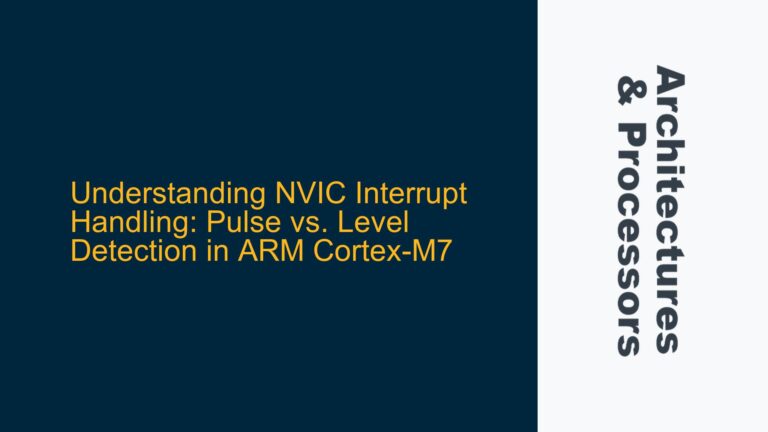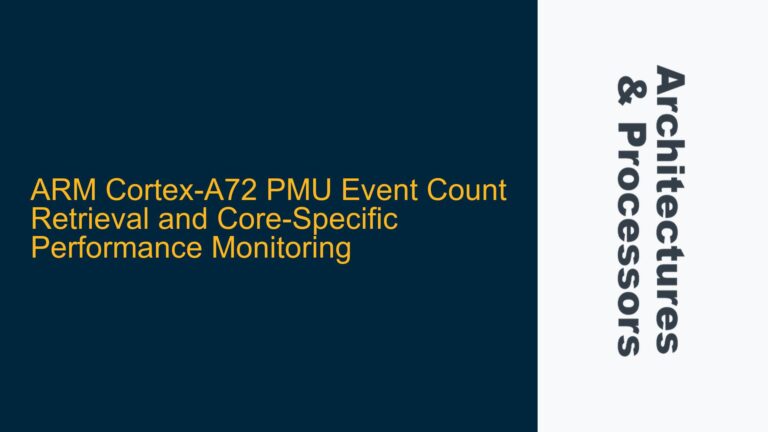ARM Cortex-A7 Library Selection Mismatch with -marm Compilation Flag
When compiling for the ARM Cortex-A7 processor using the -marm flag, which instructs the compiler to generate ARM (32-bit) instructions, developers may encounter an unexpected behavior where the -print-libgcc-file-name option returns a Thumb-2 library path instead of an ARM library. This discrepancy arises because the GNU Toolchain for the A-profile Architecture, specifically version 9.2.1, does not provide ARM-specific libraries for the Cortex-A7. Instead, it defaults to Thumb-2 libraries, which are optimized for code density and performance in most scenarios.
The Cortex-A7 is a highly efficient processor that supports both ARM and Thumb-2 instruction sets. Thumb-2 is a hybrid instruction set that combines 16-bit and 32-bit instructions, offering a balance between code density and performance. The ARM instruction set, on the other hand, is purely 32-bit and is typically used in scenarios where maximum performance is required. However, for most applications, Thumb-2 provides sufficient performance while significantly reducing the code size, which is why the toolchain prioritizes Thumb-2 libraries.
The -print-libgcc-file-name option is used to display the path to the libgcc.a library, which contains low-level runtime support routines for the GCC compiler. When the -marm flag is used, one would expect the toolchain to return an ARM-specific library path. However, due to the absence of ARM-specific libraries for the Cortex-A7 in the toolchain, it defaults to the Thumb-2 library path. This behavior can be confusing for developers who are explicitly targeting the ARM instruction set.
Thumb-2 Library Compatibility with ARM Mode Execution
The primary concern for developers encountering this issue is whether there is any performance overhead or compatibility issues when calling Thumb-2 library functions from ARM mode code. The ARM architecture is designed to seamlessly handle interworking between ARM and Thumb-2 instructions. When a function call is made from ARM mode to a Thumb-2 function, the processor automatically switches to Thumb-2 mode, executes the function, and then switches back to ARM mode upon return. This interworking is handled by the processor’s instruction set state machine, which ensures that there is no significant overhead or performance penalty.
The Thumb-2 instruction set is a superset of the original Thumb instruction set, introducing 32-bit instructions that provide similar functionality to the ARM instruction set. This allows Thumb-2 code to achieve performance close to that of ARM code, especially on processors like the Cortex-A7, which are optimized for Thumb-2 execution. Additionally, the Thumb-2 instruction set includes features such as conditional execution and improved branch handling, which further enhance its performance.
In practice, the performance difference between ARM and Thumb-2 code on the Cortex-A7 is minimal for most applications. The primary advantage of using Thumb-2 is the reduction in code size, which can lead to better cache utilization and lower memory bandwidth requirements. This is particularly beneficial in embedded systems where memory resources are often limited.
Resolving the Library Selection Issue and Ensuring Optimal Performance
To address the issue of the toolchain defaulting to Thumb-2 libraries when the -marm flag is used, developers have several options. The first option is to accept the use of Thumb-2 libraries, as they are fully compatible with ARM mode execution and provide a good balance between performance and code size. This approach is recommended for most applications, as it leverages the optimizations provided by the Thumb-2 instruction set.
If developers require ARM-specific libraries for their application, they can explore alternative toolchains or build their own libraries from source. However, this approach is generally not recommended unless there is a specific need for ARM-only code, as it can introduce additional complexity and maintenance overhead. Additionally, building custom libraries may require a deep understanding of the ARM architecture and the GCC toolchain, which can be time-consuming.
Another option is to use the -mthumb flag explicitly, which instructs the compiler to generate Thumb-2 instructions. This ensures that the toolchain selects the appropriate Thumb-2 libraries and avoids any confusion regarding library selection. This approach is particularly useful for developers who want to take full advantage of the Thumb-2 instruction set and its benefits in terms of code density and performance.
In conclusion, the issue of the toolchain defaulting to Thumb-2 libraries when the -marm flag is used is a result of the toolchain’s optimization for Thumb-2 code on the Cortex-A7 processor. While this behavior may be unexpected, it is not a cause for concern, as Thumb-2 libraries are fully compatible with ARM mode execution and provide a good balance between performance and code size. Developers can choose to accept the use of Thumb-2 libraries, explore alternative toolchains, or explicitly use the -mthumb flag to ensure optimal performance and compatibility.
| Option | Description | Recommendation |
|---|---|---|
| Accept Thumb-2 Libraries | Use the default Thumb-2 libraries provided by the toolchain. | Recommended for most applications due to compatibility and performance benefits. |
| Build Custom ARM Libraries | Build ARM-specific libraries from source. | Not recommended unless there is a specific need for ARM-only code. |
Use -mthumb Flag Explicitly |
Explicitly instruct the compiler to generate Thumb-2 instructions. | Useful for developers who want to leverage Thumb-2 optimizations. |
By understanding the underlying reasons for the toolchain’s behavior and the compatibility between ARM and Thumb-2 instructions, developers can make informed decisions about how to proceed with their projects. The key takeaway is that Thumb-2 libraries are a viable and often preferable option for Cortex-A7 development, offering a balance between performance and code size that is well-suited to the capabilities of the processor.
